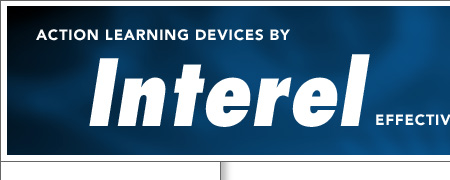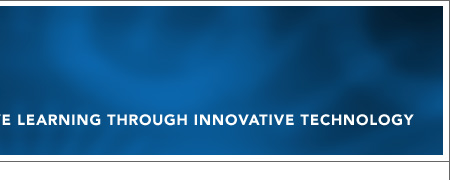

"My A-maze-n' Journey" by Alonzo Johnson, Ph.D.
I was first introduced to the Electric Maze® in 1994 while working as Assistant Professor of Quality Systems at a community college. I taught academic classes and provided learning and development consulting services to local businesses. My relationship with the Electric Maze preceded the profound business relationship I have now with its inventor. The college owned the first version of the maze (EM1). The maze quickly became my learning tool of choice inside and outside the classroom. I used it as an action learning tool in my group dynamics and leadership classes, and for my team leader facilitator training.
In 1996, I left education and accepted a position in the private business sector. As the lead learning and development person, I faced a dearth of exciting experiential learning resources. Introducing the Electric Maze to my company was my way of making a statement. Purchasing my first maze was like removing the training wheels from my bike all over again. The Electric Maze was a significant investment for a company with a limited training budget. Little was known about the maze and few thought I would be able to see my way through justifying the purchase. That changed the first day I used it. The maze debuted at a Senior Managers' teambuilding session. Although a number of skeptics attended the session, once they stepped onto it, they were hooked—the rest is history.
Later, the EM3, a smaller, lightweight and portable version of the EM1 was in its infancy and my passion for larger maze waned in favor of the smaller version. The portability of the EM3 was a welcomed feature, as my new job required me to conduct workshops at multiple locations within the company. The black case in the corner stirring the curiosity of numerous workshop attendees became a water cooler topic for workshop attendees and workshop hopefuls throughout the company. I found ways to incorporate maze activities in continuous improvement, communications, team development, leadership and other workshops I facilitated. I found it to be versatile enough to add value to almost any topic I facilitated.
A few years later, the breadth and scope of my responsibilities expanded across the United States, Canada and Scotland. With this expanded responsibility came the task of managing a team of learning and development professionals. I recall each summer we held a week-long train-the-trainer workshop to hone our learning and development skills. The EM3 was always featured at this event as we shared best practices for current use and pressed-the-envelope to explore more innovative ways for future use—we were never disappointed.
My team and I would use the EM3 and lessons learned from the train-the-trainer workshops to implement learning programs at multiple locations. The portability of the device allowed us to ship it where we needed ahead of upcoming events. It is humorous that the portability of the EM3 created a paradoxical outcome. Specifically, we shipped them so often that FedEx lost one of them twice! They found them each time—six to eight months later.
In 2005, I became a senior executive with the responsibility for talent management and organizational development globally, and for staffing across North America. As part of my talent management responsibility, I oversaw two company-specific leadership development programs. By then, the EM3 had become entrenched in my department and was our action learning device of choice. Needless to say, we used the EM3 in our communication, problem solving and team building sessions, as well as leadership development for leaders in each program. The EM3 is an excellent tool for helping leaders to understand the complexity of leadership.
In one of the leadership activities I used the maze to illustrate the importance of shared vision—a key requirement for organizational success. In this activity, the leader had to lead his/her team across the maze by finding a cleared path within 10 minutes. The leader was given a sealed envelope containing a piece of paper that showed a line indicating a direction across the maze—the vision. The line was not shown in relation to the maze pattern or squares—it was just a line. The remaining participants received a sealed envelope showing a portion of the cleared maze pattern. The team was given 5 minutes for planning and could talk during that time. Once team members started across the maze, they could no longer talk and could only communicate by gesturing to each other. Half way through the 10-minute activity, I would stop the time to allow everyone to open their envelope, review its content, and talk/strategize for 1 minute before starting back on the maze.
The point of this activity was to illustrate the importance of everyone contributing to the vision in a shared way. Although the leader has a vision, it is useless until everyone within the organization can see it and contribute to accomplishing it. An after action review was conducted at the end of the activity for participants to relate their maze experience to the actual behavior of their organization. Participants would brainstorm ways to change undesired behavior and create action plans for accomplishing the desired behavior.
I always found that the maze was remarkable at helping facilitators orchestrate a dynamic and fun learning environment that yielded remarkable results. In fact, the learning environment was often so dynamic I would get caught-up in the moment and forget to turn the maze back on after changing to a new pattern during the activity! I would wonder why participants were finding their way across the maze so quickly, and then realize the switch was off. I would quickly turn the switch back on before the last participant crossed the maze—throwing in an impromptu change management activity to cover up my forgetfulness.
I have used the Electric Maze for over 18 years. It is a remarkably versatile learning aid that empowers participants to achieve the desired learning outcome and have fun while doing so. The electric maze has been my learning aid of choice for a variety of people development initiatives I have conducted over the years.
I am currently a consultant with my own talent management consulting business—and yes, I am still a devout maze user. I have used it continuously since I was introduced to it early in my career. I found the Electric Maze to be a flexible and effective action learning device that has and will continue to evolve to meet the learning needs of a broad audience. The only maze you will encounter with the device is the one your audience will learn from and enjoy.